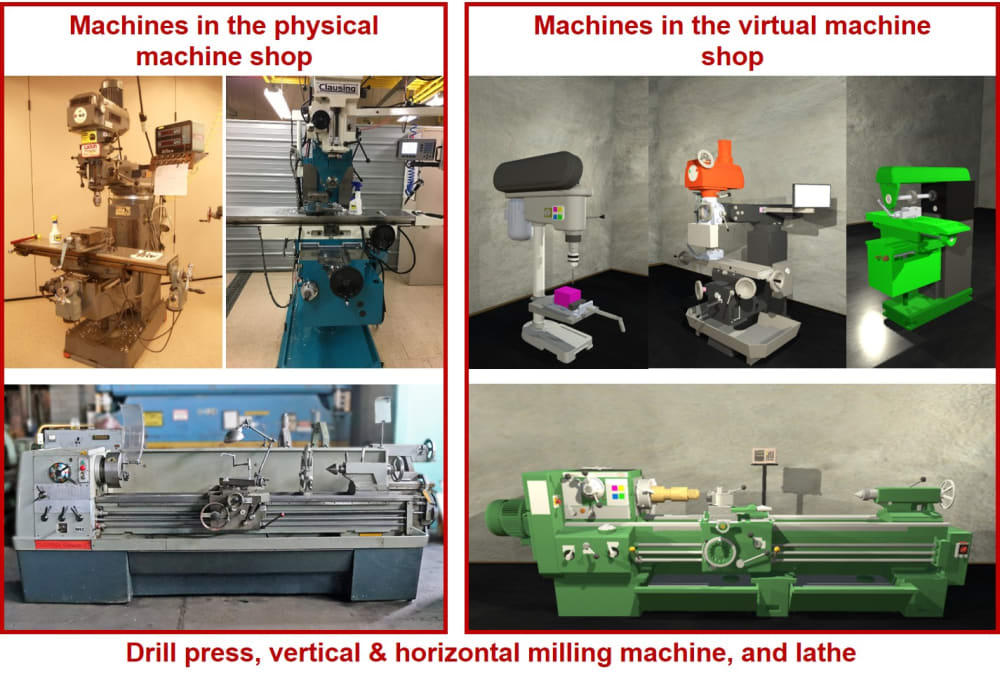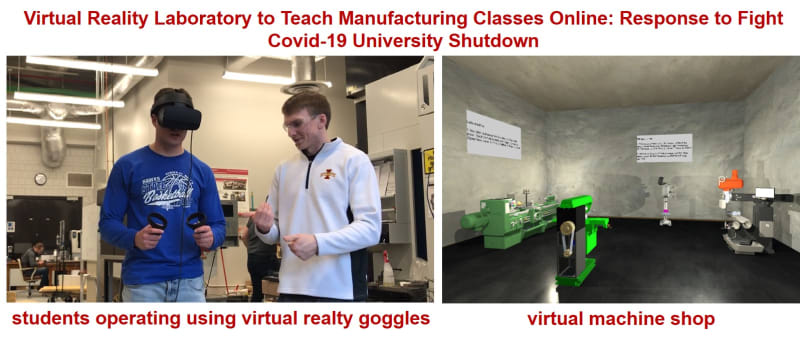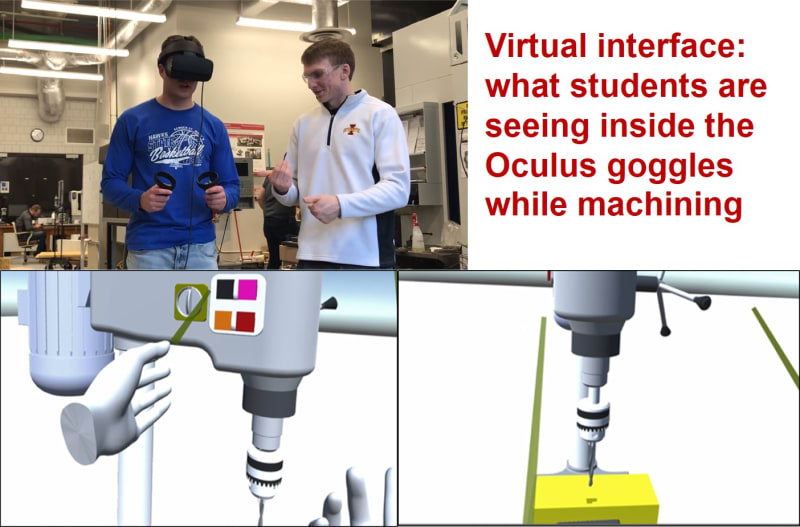
Iowa State University and North Carolina A&T State University are working together to develop a smart virtual reality system (SVRS) for engineering students to continue manufacturing lab during the COVID-19 pandemic period. It is challenging for engineering students to work in the manufacturing lab to keep adequate social distance due to the hands-on operation nature of the manufacturing lab course. These efforts enable the student to continue the hands-on manufacturing lab, reduce the infection risk, prolong the manufacturing lab training time, and decrease the cost for maintaining the course.
Manufacturing lab is a vital component of the manufacturing course teaching, which helps engineering students to convert theoretical knowledge into practical capability. Students often physically present in the manufacturing lab to operation on various machines, including lathe, drill press, horizontal and vertical milling machines, computer numerical control (CNC) machine, etc. Graduate TAs and lab technicians work with students in the manufacturing lab to operate all machines to manufacture designated parts and to practice learning. However, COVID-19 has caused university shutdowns now. Even if teaching is resumed, social distancing will be required, resulting in challenges to deliver physical manufacturing labs.
Utilizing virtual reality (VR) technology is a promising solution such that students can operate the machines in a virtual environment similar to physical lab setups. In our SVRS, users can see machines and parts in a created virtual environment through the Unity game engine development tool with a first-person view. The constructed 3D models of different machines in SVRS delivers the end user a perfect experience in the virtual environment. Buttons on the machine simulate the function of real machines to provide feedback as the user pushes buttons on machines. Users can pick up parts, hold the part, mount on the vice holder, turn on the machine, turn off the machine, and other interactions with the machine. The educational design would navigate student’s attention to focus on learning to practice operating machines. Students can learn and follow content in the software without extra instruction, which saves time and effort of instructor/TA/staff as well. The VR app can be offered for Oculus VR goggles, android apps and computer interface.
This SVRS could bridge the theoretical knowledge and practical knowledge for engineering students in manufacturing courses without risk during the COVID pandemic. Furthermore, the system could cut the cost of physical manufacturing labs. Meanwhile, unexpected accidents happen in the manufacturing labs, but VR can reduce possible damages. The SVRS system only requires students to wear an Oculus headset (or other electronic devices) to practice in the virtual manufacturing lab. Students can safely work with unlimited times to practice. Lastly, the flexibility of this smart system attracts users in a way that they may start to work at any time and place. This technique is designed to be a solution to overcome the challenge during COVID-19; however, it could further be used for manufacturing education for students who have disabilities, own limited educational resources, or take remote education courses.
Video
-
Awards
-
 2020 Top 100 Entries
2020 Top 100 Entries
Like this entry?
-
About the Entrant
- Name:Hantang Qin
- Type of entry:teamTeam members:Hantang Qin, Assistant Professor, Iowa State University
PhD Students: Alex and John; Undergraduate Students: Zach, Brett and Thomas; Industrial & Manufacturing Systems Engineering, Iowa State University
Yi Cai, Assistant Professor, North Carolina Agricultural and Technical State University
Undergraduate Student: Morice; Department of Applied Engineering Technology, NC A&T - Software used for this entry:Unity
- Patent status:pending








